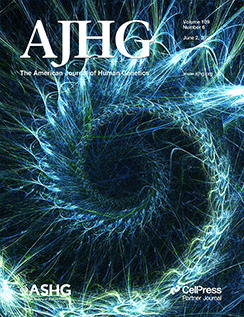Genomics-informed drug-repurposing strategy identifies two therapeutic targets for preventing liver disease associated with metabolic dysfunction.
IF 8.1
1区 生物学
Q1 GENETICS & HEREDITY
引用次数: 0
Abstract
Identification of drug-repurposing targets with genetic and biological support is an economically and temporally efficient strategy for improving the treatment of diseases. We employed a cross-disciplinary approach to identify potential therapeutics for the prevention of metabolic-dysfunction-associated steatotic liver disease (MASLD) in at-risk individuals by using humans as a model organism. We identified 212 putative candidate genes associated with MASLD by using data from a large multi-ancestry genetic association study, of which 158 (74.5%) were previously unreported. From this set, we identified 57 genes that encode for druggable protein targets and for which the effects of increasing genetically predicted gene expression on MASLD risk align with the function of that drug on the protein target. We then used We then evaluated these potential targets for evidence of efficacy by using Mendelian randomization, pathway analysis, and protein structural modeling. Through these approaches, we present compelling evidence to suggest that the activation of FADS1 by icosapent ethyl, as well as S1PR2 by fingolimod, could be a promising therapeutic strategy for MASLD prevention.基于基因组学的药物再利用策略确定了预防与代谢功能障碍相关的肝脏疾病的两个治疗靶点。
确定具有遗传和生物支持的药物再利用靶点是改善疾病治疗的一种经济和时间上有效的战略。我们采用跨学科的方法,以人类为模式生物,确定预防高危个体代谢功能障碍相关脂肪变性肝病(MASLD)的潜在治疗方法。我们利用一项大型多祖先遗传关联研究的数据,确定了212个与MASLD相关的推测候选基因,其中158个(74.5%)是以前未报道的。从这一组中,我们确定了57个编码可药物蛋白靶点的基因,并且增加遗传预测基因表达对MASLD风险的影响与该药物对蛋白质靶点的功能一致。然后,我们通过孟德尔随机化、途径分析和蛋白质结构建模来评估这些潜在靶点的有效性证据。通过这些方法,我们提出了令人信服的证据,表明用二十碳戊二烯乙酯激活FADS1,以及用fingolimod激活S1PR2,可能是预防MASLD的一种有希望的治疗策略。
本文章由计算机程序翻译,如有差异,请以英文原文为准。
求助全文
约1分钟内获得全文
求助全文
来源期刊
CiteScore
14.70
自引率
4.10%
发文量
185
审稿时长
1 months
期刊介绍:
The American Journal of Human Genetics (AJHG) is a monthly journal published by Cell Press, chosen by The American Society of Human Genetics (ASHG) as its premier publication starting from January 2008. AJHG represents Cell Press's first society-owned journal, and both ASHG and Cell Press anticipate significant synergies between AJHG content and that of other Cell Press titles.

 求助内容:
求助内容: 应助结果提醒方式:
应助结果提醒方式:


